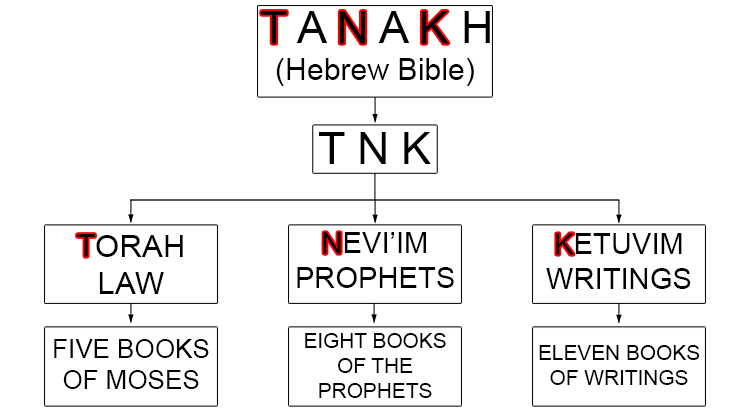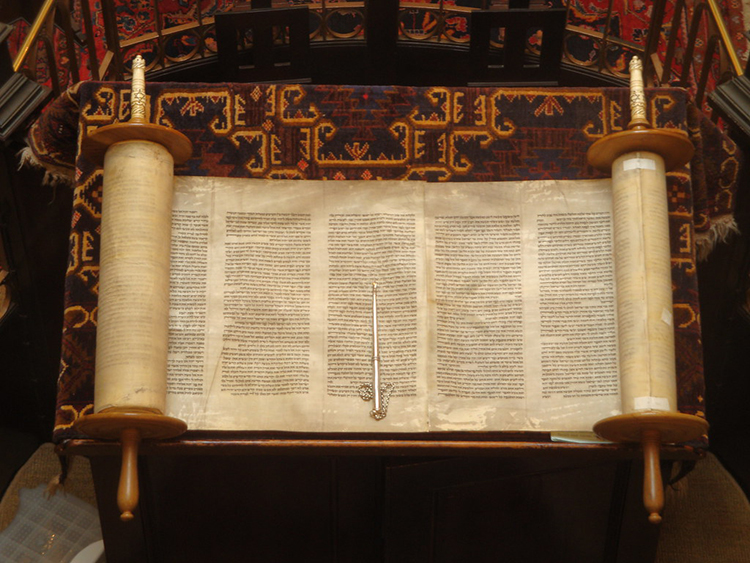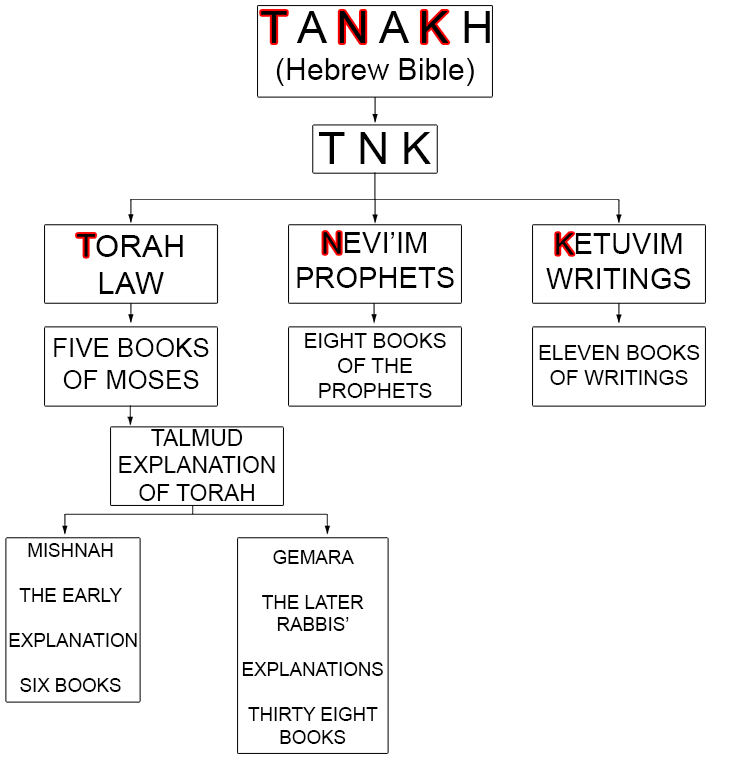Judaism Introduction
Judaism is the belief and practices of the Jewish people. Jews believe there is only one God who created the world and was revealed to them in the Tanakh. Tanakh is the main text often referred to as the Hebrew Bible.
Judaism is an "Abrahamic" religion, which means the patriarch Abraham is regarded as its founding figure. (The other Abrahamic religions are Christianity and Islamism - all trace their origins back to Abraham.)
It was Abraham that came up with the concept of there being just one God, known as monotheism.
The Old Testament in the Christian Bible is made up of the books of Tanakh, although they appear in a different order.
The Tanakh is an acronym (a word formed from the first letters of other words) made up from the three sections of its contents: the Torah, Nevi'im and Ketuvim.

The Synagogue is the Jewish community house of worship. The Torah can also be found as a handwritten scroll made of cow's leather:

"Torah" by Lawrie Cate is licensed under CC BY 2.0
Another Jewish scripture, the Talmud, is called the oral law although it is a large set of books eventually written down 1700 years after the receiving of the Tanakh (Hebrew Bible).
It's called oral law because, according to Jewish tradition, the laws were passed down by word of mouth (orally) in an unbroken chain from generation to generation until its contents were finally committed to writing following the destruction of the Second Temple in 70 CE, when Jewish civilisation was faced with an existential threat because of the dispersion of the Jewish people.
In Jewish culture, it is said that to understand one of these two scriptures (Torah or Talmud), the other must be read.
The Talmud contains a series of discussions, commentary, folk tales and teachings about how the written laws in the Torah must be implemented. Without these, how can you know what is meant when the Torah says "Put fringes on the four corners of your garment". What fringes? What should they look like? What are they made of? What garment? Do I need fringes on my underpants? My underpants don't have four corners! Without the Talmud, the laws of written Torah are often obscure.
The Talmud is split into two parts,: the Mishnah and the Gemara.

Torah
The Torah is made up of five books, which include:
- Genesis – Creation of the world, the early history of humanity and origins of the Jewish people.
- Exodus – The liberation of the people of Israel from slavery in Egypt.
- Leviticus – The rules for all Jews.
- Numbers – Begins and ends with a census (count) of all Israelites.
- Deuteronomy – A farewell address by Moses.
The Torah contains 613 mitzvot (Jewish rules of commandments). The most well known of these laws are the Ten Commandments.
Nevi'im
Nevi'im is the second of these three major sections of the Tanakh. It traces Jewish history and says more about the Jewish laws.
- Joshua – Contains history of the Israelites from the death of Moses to Joshua.
- Judges – The history of the Jews from the death of Joshua to the birth of Samuel.
- Samuel – Tells of Israel's oppression by the Philistines.
- Kings – Tells the story of the kingdoms of Israel and of Judah from the beginning of King Solomon's reign to the destruction of Jerusalem.
- Isaiah – It records the prophecies of Isaiah son of Amoz.
- Jeremiah – One of the major prophets whose life and sayings are collected.
- Ezekiel – Reveals prophecies regarding the destruction of Jerusalem and the restoration to the land of Israel.
- The Twelve – Contains books of 12 minor prophets.
Ketuvim
The Ketuvim contains eleven books and include psalms, proverbs and philosophy as follows:
- Psalms – 150 poems and songs.
- Proverbs – Sayings and long poetic units of wisdom.
- Job – Addresses why God permits evil in the world. Job's wealth, family and material comforts are taken from him.
- Song of songs – An allegory of the relationship between God and Israel.
- Ruth – The story of Ruth who became a Jew by choice.
- Lamentations – The story of a city that had profusely sinned against God.
- Ecclesiastes – Reflects on the vanity of human life.
- Esther – Relates the story of Esther who becomes Queen of Persia and thwarts a genocide of her people.
- Daniel – An account of the life and visions of Daniel and a prophecy of history.
- Ezra and Nehemiah – Provides an account of the Jews regathering, of their struggles to survive and to rebuild what had been destroyed.
- Chronicles – Contains a genealogy starting with Adam and a history of ancient Judah and Israel up to the Edict of Cyrus.
Note: Jews don't believe in Jesus. Or more accurately, Jews do not accept Jesus as the Messiah because:
- Jesus did not fulfil the messianic prophecies.
- Jesus did not embody the personal qualifications of the Messiah.
- Biblical verses "referring" to Jesus are mistranslations.
- Jewish belief is based on national revelation.




